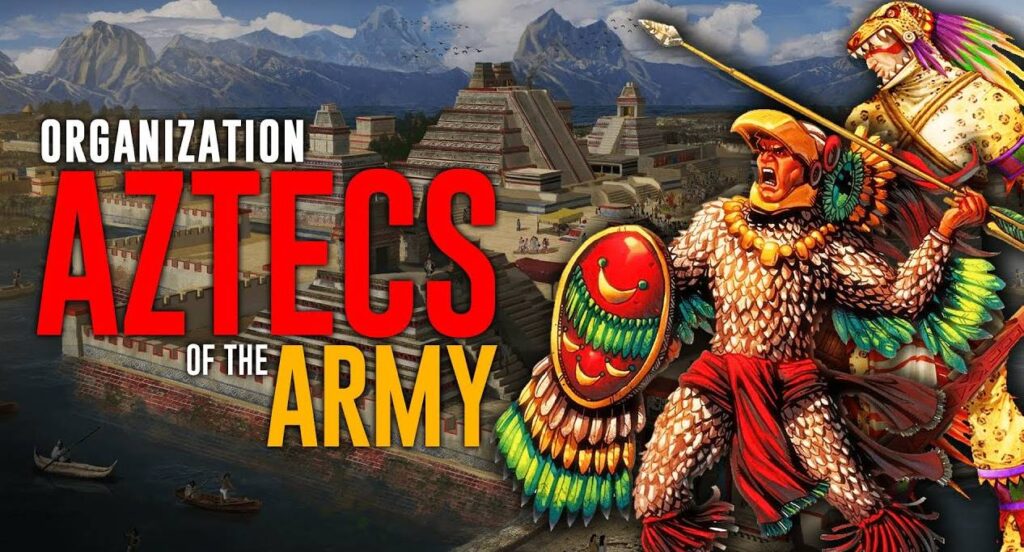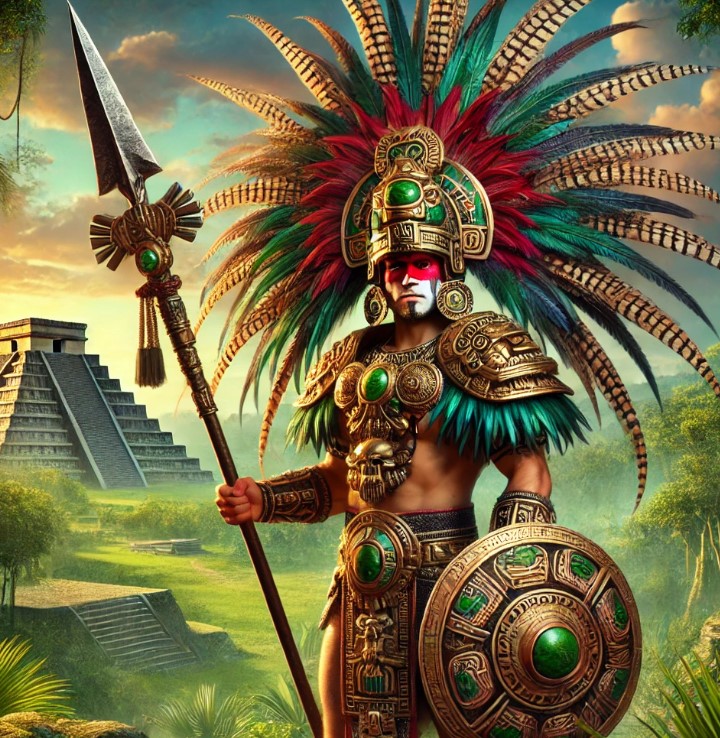
The Aztec Military Ranks: Power and prestige
Aztec society was famous for its advanced political, religious, and military system. Therefore, the military hierarchy, known as Aztec Military Ranks, was one of the most interesting aspects of its structure. This system ranked individuals based on their battlefield and social status.
Strength, cunning, and heroism
Military ranks ranged from commoner warriors to knights, eagle or jaguar, feared and respected figures. In this sense, rising through the ranks required not only physical strength, but also cunning, bravery and heroic behaviour.
Bravery Over Birth: Climbing the Aztec Military Ranks
Unlike other civilisations, in the Aztec Empire social class did not completely define one’s future as a warrior. The nobility had more opportunities to achieve high ranks. However, commoners could rise through bravery and combat prowess. Skill in battle could give a commoner more power and influence. In fact, he could even surpass a nobleman who did not prove his worth.
Difference between noble warriors and commoners:
- Commoners:
- They started as young warriors and had to train hard.
- Their advance depended on capturing enemies in battle.
- They had limits on the ranks they could reach.
- Nobles:
- They had more opportunities because they received better training.
- They could advance faster and reach the higher ranks.
Youth joining the army:
- They began training as young warriors (Telpochalli) and progressed to higher ranks according to their performance.
- Example:
- Telpochalli: Young warriors (with special hairstyle).
- Tiachcauh: Master of young men (for bravery in battle).
The progression of Aztec military ranks
As for specific ranks, the structure was rather rigid, but allowed for promotion through military exploits. The system assigned ranks based on the number of enemies captured and divided them into several categories. The lowest warriors, such as the Tlamani, were those who captured only one prisoner.
The road to honour in the Aztec army
By demonstrating skill in capturing prisoners, a warrior rose through the Aztec military ranks, gaining power and prestige. At the next level, the Cuextecatl captured two enemies. The Papalotl, butterfly warriors, achieved rank with three prisoners. The most prestigious warriors were the Cuauhocelotl, known as eagle or jaguar warriors. Aztec society feared and revered them.
Check out this article: Timeline history of the Aztecs
Ranks for capturing enemies:
- To rise in rank, a warrior had to capture enemies in battle:
- Cuextecatl: Captured two.
- Tlamani: Captured an enemy.
- Cuauhtlocelotl (eagle or jaguar): Captured four enemies.
- Otontin (otomí): Captured five or six enemies.
- Cuauhchicqueh (the shaven ones): Highest rank. It required capturing many enemies and demonstrating extreme bravery.
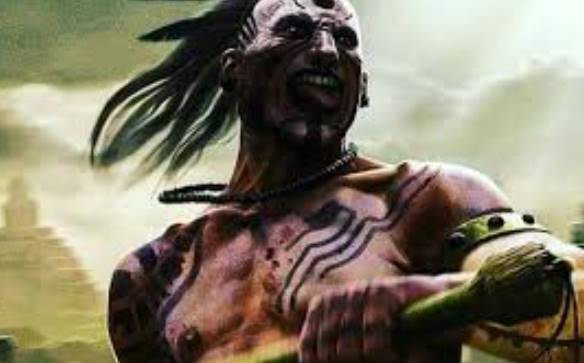
The fascinating part of this system is that the nobles had better opportunities because of their education. However, the system did not overlook the commoners. The most prominent warriors were the Cuauhchicqueh, or ‘the shaven ones’. They were an example of meritocracy, as their promotion depended on their skill in combat and not on their social origin.

Other Military roles:
- Tlamemeh: Commoners who helped the army as porters (carried weapons and supplies).
- Warrior priests: Combined religious and military functions, with their own ranks depending on the captives they captured.
The role of the noble class in the Aztec military ranks
Although commoners could rise through their skill as warriors, the nobility also played a key role. The nobles held the greatest positions of power and trained in military tactics from a young age, which gave them an advantage in battle.. In Aztec society, some high military positions went to warrior priests, who combined religious and military roles. The Tlacochcalcatl, guardian of the dart house, shows how religion and warfare were intertwined in the Aztecs.

Aztec military ranks and its different orders
The Huey Tlatoani, supreme leader of the empire, commanded the Tlacateccatl and Cihuacoatl as commanders and war advisors. These leadership roles were essential for coordinating battles and organising the Aztec army, known for its tactical prowess.
The Topileh, or constables, were of high rank, and their functions were similar to those of a commander-in-chief. This system allowed the Aztecs to have experienced leaders at both the strategic and tactical levels.
Daily life of an Aztec warrior
The life of an Aztec warrior included fighting and war, but also moments of leisure and preparation. Thus, training began at an early age. Young warriors were trained by veterans in combat techniques and military strategies. High-ranking warriors, such as the Cuauhchicqueh, enjoyed a more comfortable life. They had land of their own, concubines and could pass on their knowledge to future generations.
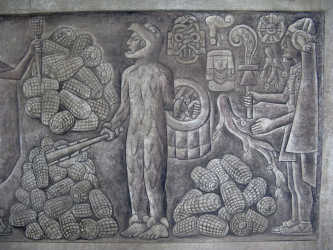
The Spiritual Role of the Aztec Warrior
It is important to note that being a warrior in the Aztec Empire was not just about fighting. Warriors had to maintain a close relationship with the gods, as human sacrifice was fundamental to the Aztec religion. Captured prisoners were sacrificed to appease the gods. This act gave prestige to warriors and warrior priests.
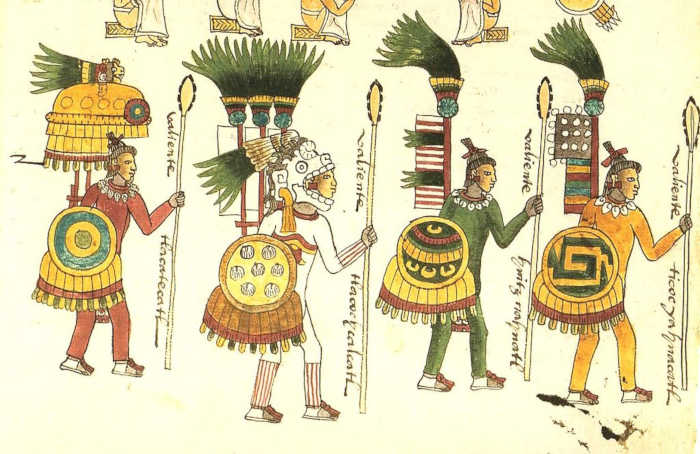
The Flowery Wars
The famous Florid Wars are another element that complements the Aztec military ranks. These wars were fought not only to conquer land, but also to obtain prisoners for sacrifices. The main enmity of the Aztecs in these wars was with the Tlaxcaltec, who also participated in these ritual contests. Although the warfare was violent, it had a religious function. Capturing prisoners was both a warlike and spiritual act.

The death of an Aztec warrior
The death of an Aztec warrior was a solemn ceremony, whether in battle or by natural causes. Warriors who had fallen in battle received a special tribute. Their bodies were burned on the battlefield and an arrow was brought back to burn in the city. This ritual is known as the 80-day lament. It allowed family members and comrades-in-arms to mourn the loss. In addition, they did not bathe during this time as a sign of respect.
Aztec society, military ranks marked not only power in battle, but also social status. In short, their hierarchical structure allowed commoners and nobles to rise according to their skill, bravery and captured prisoners, reflecting the importance of war and sacrifice in their culture.

